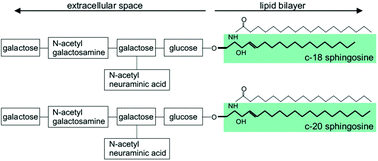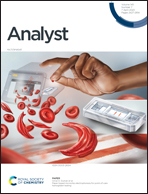Imaging mass spectrometry allows for neuroanatomic-specific detection of gangliosides in the healthy and diseased brain
Abstract
Gangliosides have a wide variety of biological functions due to their location on the outer leaflet of plasma membranes. They form a critical component of membrane rafts, or ganglioside-enriched microdomains, where they influence the physical properties of the membrane as well as its function. Gangliosides can change their structure to meet their external and internal environmental demands. This ability to change structure makes gangliosides both fascinating and technologically challenging targets to identify and understand. A full understanding on how gangliosides are regulated within the central nervous system (CNS) is critical, as ganglioside dysregulation is observed in the aging brain as well as in several neurodegenerative injuries and diseases such as stroke, Alzheimer's disease, Parkinson's disease, Huntington's disease and several lysosomal storage disorders diseases, including Tay Sach's disease. Mass spectrometry (MS) has become a useful means to better understand ganglioside composition and function. Imaging mass spectrometry (IMS) provides the added benefit of placing analytical information within an anatomical context. This review article will discuss recent advances in MS-based detection methods, with a focus on IMS-based approaches to help understand the spatial-specific role gangliosides in the healthy brain as in CNS injuries and disease.

- This article is part of the themed collection: Analytical Science in Neurochemistry


 Please wait while we load your content...
Please wait while we load your content...